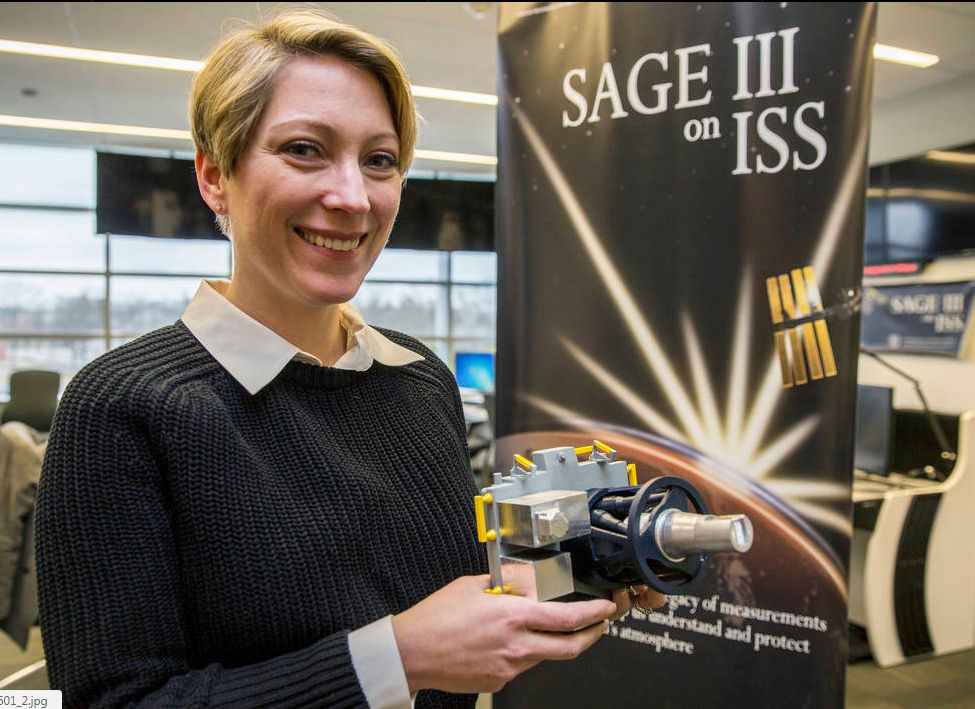
Brooke Thornton, of NASA’s Langley Research Center in Hampton, Virginia, is the mission operations manager for SAGE III on the International Space Station. She is holding a scaled model of the instrument. Photo Credit: NASA Langley
The Stratospheric Aerosol and Gas Experiment (SAGE) III sensor will be mounted to the International Space Station. The sensor will be launched aboard a SpaceX Falcon 9 rocket later this year. The instrument detects the loss of stratospheric ozone.
The first SAGE instrument began operations in space on Feb. 18, 1979, following a 1975 proof-of-concept experiment called the Stratospheric Aerosol Measurement (SAM) on the Apollo-Soyuz mission.
SAM, the first experiment of its kind conducted from space, proved the value of a technique called occultation, a method in which scientists identify components of the air by studying sunlight as it beams through the upper edges of atmosphere and comparing it to light coming straight from the sun, with no atmosphere in between. SAM was followed by SAM II and then the SAGE instruments.
SAGE II was a part of the Earth Radiation Budget Satellite (ERBS) and was deployed by the crew of space shuttle Challenger in 1984. It operated and produced data for more than 21 years.
You can learn more about SAGE III here.
Filed Under: Aerospace + defense




